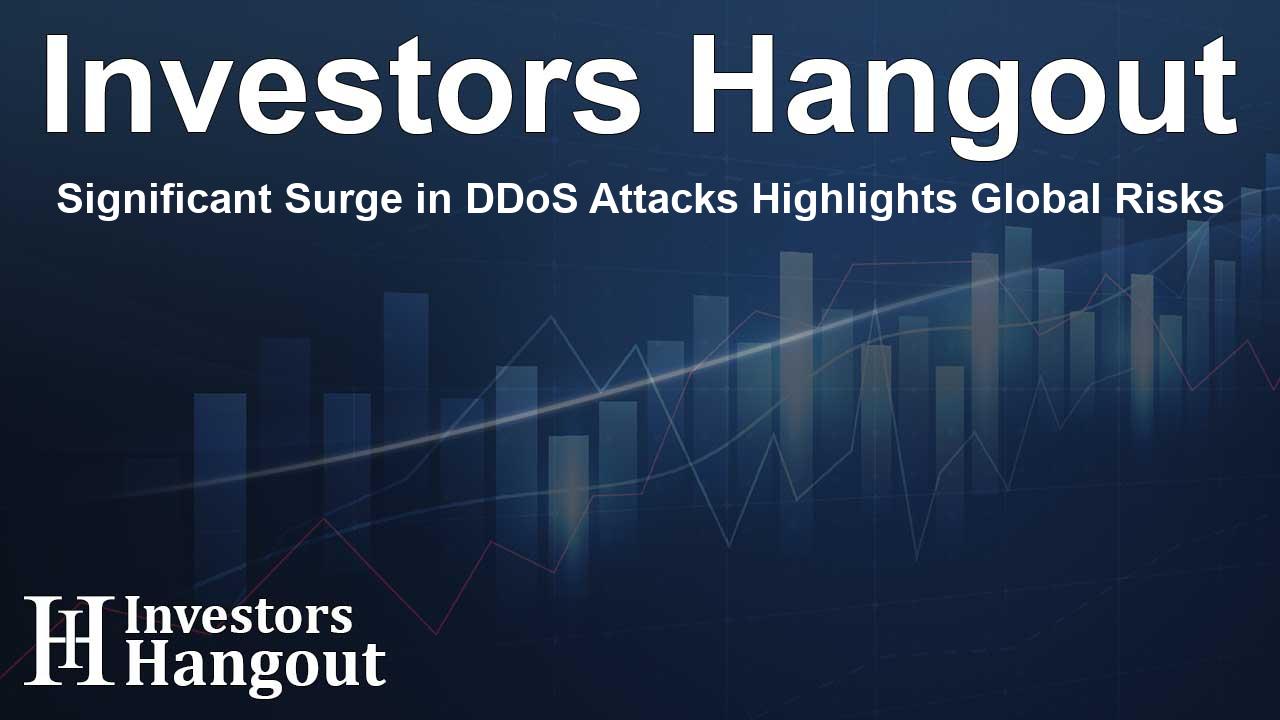Significant Surge in DDoS Attacks Highlights Global Risks

DDoS Attacks on the Rise: A Growing Concern
NETSCOUT SYSTEMS, INC. (NASDAQ: NTCT) has unveiled startling statistics in its latest report regarding the surge in DDoS attacks. Cyber threats have surged dramatically, with application-layer attacks increasing by 43% and volumetric attacks by 30%. These alarming trends are particularly visible in regions such as Europe and the Middle East. The majority of these attacks are short-lived; about 70% last under 15 minutes. However, the underlying impact is far more significant, especially when critical infrastructure is targeted.
Hacktivism and Its Implications
The rise of hacktivist groups has compounded the issues faced by organizations worldwide. These groups are orchestrating increasingly sophisticated DDoS attacks against important sectors, including banking, government services, and utilities, creating severe disruptions. Richard Hummel, NETSCOUT's director of threat intelligence, emphasized the coordinated nature of such attacks, stating that adversaries are leveraging complex tactics that make detection and response a significant challenge for network teams.
Emergence of Advanced Attack Techniques
DDoS attacks are evolving continually, posing a greater risk than ever before. During the first half of 2024, NETSCOUT observed disruptive trends largely driven by innovative technologies. For instance, the pro-Russia hacktivist group NoName057(16) has shifted its focus to application-layer attacks, particularly employing HTTP/S GET and POST floods. Also notable is the rapid growth of bot-infected devices, which grew by 50%, bolstered by the emergence of the Zergeca botnet and the sophisticated DDoSia botnet.
Impact of Distributed Botnets
The complexities of DDoS attacks have increased, with distributed botnet infrastructure allowing for more resilient and decentralized attack coordination. These widespread disruptions can significantly hinder business operations, crippling revenue streams and escalating organizational risks. The ripple effects of such outages affect not only the targeted organizations but also their customers and partners.
The Role of New Networks
Another key finding from NETSCOUT's report underscores the risks associated with new networks entering the ecosystem. With over 75% of newly established networks engaging in DDoS-related activity, organizations are urged to be proactive in their DDoS protection strategies. Launching new autonomous systems (ASNs) comes with an assumption that protections will be automatic. Yet, this report indicates that many of these new networks find themselves embroiled in DDoS threats almost immediately.
Staying Ahead of Evolving Threats
Organizations must remain vigilant, employing robust strategies to counter the increasingly sophisticated nature of DDoS attacks. With NETSCOUT’s experience garnered over decades, they leverage data from 216 countries, aiding businesses in understanding and mitigating risks associated with these attacks. Companies should prioritize enhancing their security measures and response strategies to adapt to the evolving landscape.
Importance of Continuous Monitoring
Continuous internet visibility and data analysis are critical tools in the fight against cyber threats. NETSCOUT’s ATLAS platform processes an immense volume of internet traffic, allowing for real-time insights into global DDoS attacks. This data not only illuminates current threats but also helps organizations prepare for potential future attacks and understand the shifting dynamics in cyber warfare.
Emphasizing Cyber Preparedness
Achieving and maintaining preparedness against DDoS threats is an ongoing commitment. As threats evolve, so too must the strategies to defend against them. Businesses must invest in sophisticated network monitoring tools and ensure their teams are equipped to handle unexpected attacks. By adopting a proactive mindset and leveraging the insights provided by experts like NETSCOUT, organizations can fortify their defenses effectively.
Frequently Asked Questions
What are DDoS attacks?
DDoS attacks involve overwhelming a network, service, or server with excessive traffic, causing disruptions and outages.
What are the recent trends in DDoS attacks?
Recent reports indicate a significant increase in both application-layer and volumetric DDoS attacks.
How can organizations protect against DDoS attacks?
Organizations should implement robust network monitoring and mitigation strategies, ensuring they are prepared to respond swiftly to potential threats.
What role do hacktivists play in DDoS attacks?
Hacktivists are increasingly using DDoS attacks to target key industries, often driven by socio-political motives.
Why is monitoring new networks important?
New networks can quickly become involved in DDoS activities, requiring proactive protection measures to mitigate risks effectively.
About Investors Hangout
Investors Hangout is a leading online stock forum for financial discussion and learning, offering a wide range of free tools and resources. It draws in traders of all levels, who exchange market knowledge, investigate trading tactics, and keep an eye on industry developments in real time. Featuring financial articles, stock message boards, quotes, charts, company profiles, and live news updates. Through cooperative learning and a wealth of informational resources, it helps users from novices creating their first portfolios to experts honing their techniques. Join Investors Hangout today: https://investorshangout.com/
Disclaimer: The content of this article is solely for general informational purposes only; it does not represent legal, financial, or investment advice. Investors Hangout does not offer financial advice; the author is not a licensed financial advisor. Consult a qualified advisor before making any financial or investment decisions based on this article. The author's interpretation of publicly available data shapes the opinions presented here; as a result, they should not be taken as advice to purchase, sell, or hold any securities mentioned or any other investments. The author does not guarantee the accuracy, completeness, or timeliness of any material, providing it "as is." Information and market conditions may change; past performance is not indicative of future outcomes. If any of the material offered here is inaccurate, please contact us for corrections.